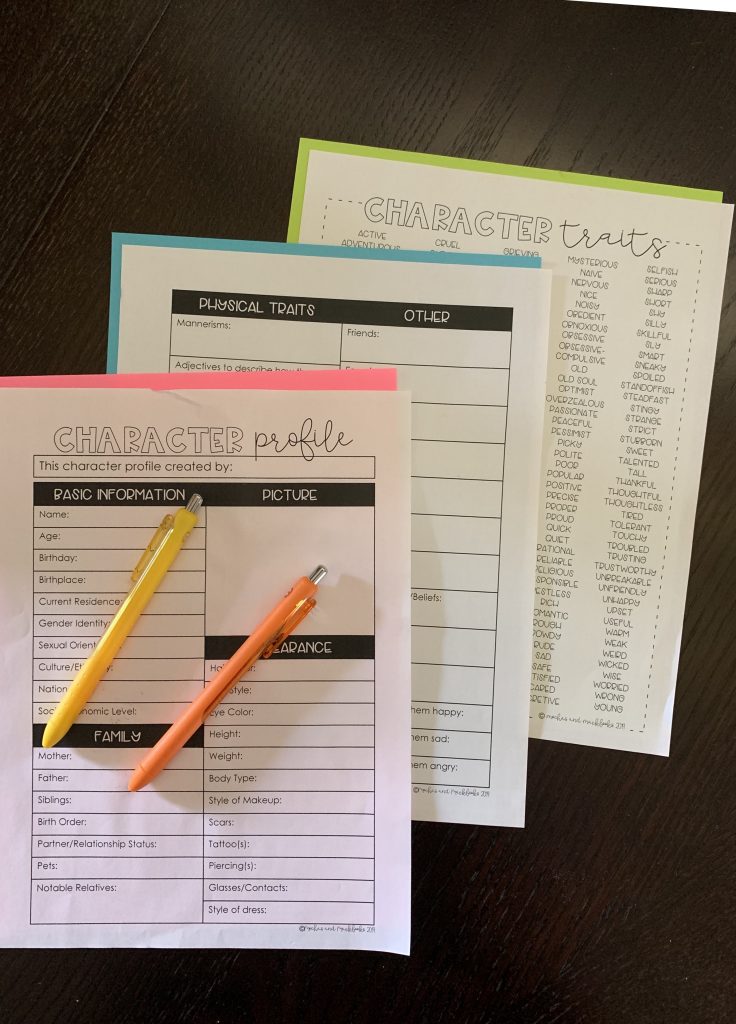Helping Students Brainstorm for Creative Writing
Sharing is caring!
“Don’t tell me the moon is shining; show me the glint of light on broken glass.” This Anton Chekhov quote is one of my favourites to use when helping my students think like creative writers.
But before they can get to that point, many students struggle with even putting pen to paper because they aren’t sure what would make a good idea for a story.
Before students can wrap their head around the plot of their story I find it helpful to facilitate some idea generator activities. These activities are meant to inspire students for writing, to give them a story premise as a jumping off point, and can also provide opportunities for you as the teacher to model these strategies and create some fun group writing as a class.
Mentor Texts
Mentor texts are the logical starting point in developing creative writing ability. Before diving into any genre of writing, this step is critical. So, if I am going to be asking my students to write a short story, then I need to provide ample opportunities to read and analyse short stories beforehand. In addition to short story studies, I have also created stations where I had my students analyse different short story excerpts for different criteria. One station asked students to reflect on the effectiveness of various story hooks or beginnings, another station required them to evaluate the character development in different passages, and so on. Studying mentor texts can make a big difference in students feeling confident enough to start their own writing.
Sources of Inspiration
Another fun activity is to ask students to keep a “Writing Inspiration” notebook or list. I staple a sheet onto the inside cover of the notebook listing possible sources of inspiration to pay attention for. These include things like: overhead dialogue, people watching, quotations, artwork, song lyrics, and so on. Students can review their list for inspiration when they need to write a creative writing piece.
Title Generators
Sometimes, all students need to get inspired is a good title. You can keep a “Title generator kit” in your classroom for such occasions. This kit can include anything that might spawn a good story title – paint chip colour names, magnet poetry tiles, postcards, brochures, etc. You can also find story title generators online by searching for “Book Title Generator” or “Story Title Generator.”
Sentence Starters
Sentence starters are helpful for students who have writer’s block or just don’t know how to start writing in this style. This is basically a list of potential first lines of a story, so students can use them as a starting point and then continue writing. An example would be, “I woke up abruptly when I heard a loud crash coming from downstairs.”
For more of these, check out my Creative Writing Story Starters for 50 short story writing prompts in Google Slides and PowerPoint.

Premise Creators
Premise creators: There’s a few ways to help students create a premise for their story. One way is to provide them with a list of potential plotlines. For example: You get to school and realize that the zombie apocalypse has started. Another way is to create three columns – character, setting, conflict, and provide a list for each or brainstorm with the class. Then students simply need to choose a character, place them in a setting, and throw in one of the conflicts. For example: A musician (character) during the Great Depression (setting) who has amnesia (conflict). If you’d like, you can check out my Short Story Creative Writing Bundle for this premise creator activity as well as many others for each stage of the writing process.
Character Profiles

Character Profiles are helpful for students to really flesh out who their main character will be in their story. Before they can start writing about this character, they really need to feel like they know them. A character profile is a template where students can brainstorm all kinds of background details about their character like hometown, sexual orientation, religious affiliation, greatest fear, secret talent, etc. This profile will help students to understand how to develop their character in their writing to bring out their personality while maintaining consistency in their motives and actions.
Story Map
Right before starting on a rough draft, it’s helpful to jot down certain details of the plot to ensure that the story will have the proper style and structure. Students can create story maps that follow the plot diagram, or simply mind-map or list the following: main character, supporting characters, point of view, setting, conflict, theme.
Hopefully by incorporating some of these activities, your students will become engaged with creative writing and generate memorable and meaningful stories!
Leave a Reply Cancel reply
© Mochas and markbooks 2025 | Template by Waymaker Designs |
[…] are looking for more help with supporting students through creative writing, you can check out this post for ways to help students brainstorm for creative writing and my Short Story Writing package for […]